In 2020, Vivo released the X60 Pro, driven by an Exynos chip, in China. In April of this year, the X60 Pro went global, but this time, it was equipped with the Snapdragon 870 5G chipset. The X60 Pro is one of the brand’s flagships, just downstream from the X60 Pro Plus, with features like a 6.56 inch AMOLED display with a 120Hz refresh rate, a four-camera array, and a fast-charging 4200 mAh (TYP) battery. Vivo’s website does not mention the X60 Pro’s audio specifications, but it has one speaker that is bottom right-side firing.
Audio specifications include:
- One speaker (bottom right-side firing)
- No headphone jack
About DXOMARK Audio tests: For scoring and analysis in our smartphone audio reviews, DXOMARK engineers perform a variety of objective tests and undertake more than 20 hours of perceptual evaluation under controlled lab conditions. This article highlights the most important results of our testing. Note that we evaluate both Playback and Recording using only the device’s built-in hardware and default apps. (For more details about our Playback protocol, click here; for more details about our Recording protocol, click here.)
Test summary
Scoring
Sub-scores and attributes included in the calculations of the global score.
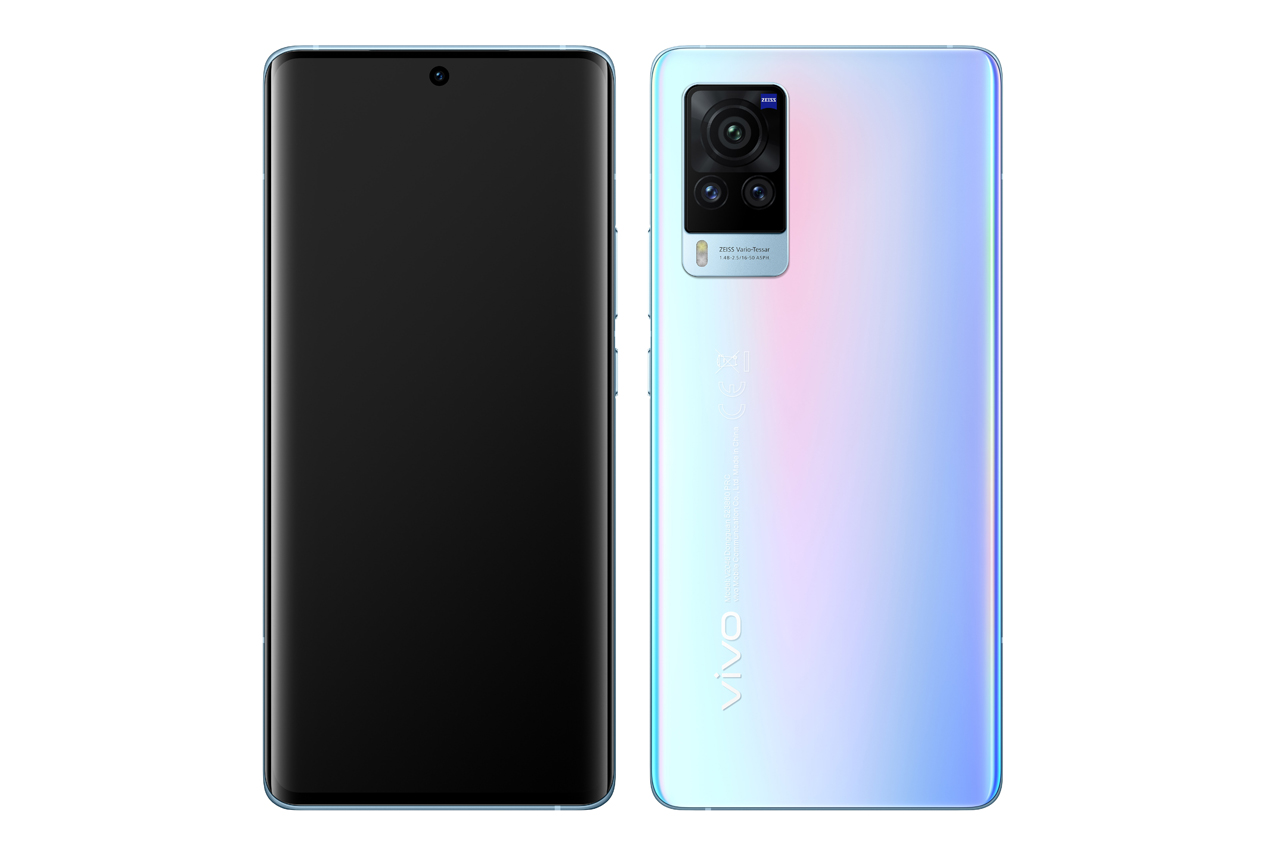
Vivo X60 Pro 5G (Snapdragon)


 204th
204th 58th
58thPlayback
Recording
Pros
- Records bass well at high sound pressure levels (SPL)
- The signal-to-noise ratio is good when recording video on rear cameras
- The envelope is rendered well with the memo app
- Wideness is captured well in the meeting use case
Cons
- Dark and muffled tonal balances in all use cases
- Strong noise reduction algorithm stifles signals in selfie video
- Noticeable artifacts in all use cases, especially in selfie video
- Wideness is very narrow for recordings with rear cameras.
With an overall score of 47, the Vivo X60 Pro earned six points less than its similarly priced brand sibling, the Vivo X51 5G, another one-speaker device, which scored a 53. These are among the lowest scores in our database ranking for smartphone audio performance.
In Playback testing, the X60 Pro was below average in most attributes, but shined in at least one. The one-speaker design was a hindrance for the most part. In timbre, the X60 Pro was very midrange focused with little low- or high-end extension. Its dynamics performance was somewhat better, with adequate attack except at low volume. The spatial attribute was a particular low point, in part because of the one-speaker design. Volume and artifacts gave the overall score a boost, with decent and excellent scores respectively.

As a recording device, the Vivo X60 Pro did not fare much better. On the plus side the X60 Pro scored well in the volume attribute, with good loudness. In other regards, it rarely was on target, with its noise reduction algorithm, on by default, driving down scores across several attributes, including timbre and dynamics. Artifacts were observable in all use cases, and again, that overly aggressive noise reduction algorithm was largely the culprit.
Sub-scores explained
The DXOMARK Audio overall score of 47 for the Vivo X60 Pro is derived from its Playback and Recording scores and their respective sub-scores. In this section, we’ll take a closer look at these audio quality sub-scores and explain what they mean for the user.
Playback

Timbre
Vivo X60 Pro 5G (Snapdragon)
47
89
Timbre tests measure how well a phone reproduces sound across the audible tonal range and takes into account bass, midrange, treble, tonal balance, and volume dependency.
The Vivo X60 Pro is well below average in the key attribute of timbre. Very midrange focused, the performance of the device severely lacks high-end extension. Tonal balance sounds tinny; the single speaker design is a handicap when trying to produce a full and rich timbre. In the chart below, you can see the nose dive taken by the Vivo devices at the high-end, while all three comparison devices are missing low-end.
As for the midrange, it’s not consistent. With high mids missing, it sounds muffled. It’s not surprising that bass is not a strong suit for the X60 Pro because the low-end is almost non existent. All these shortcomings are exaggerated at soft volume as the pronounced absence of clarity impairs the tonal balance.

Dynamics
Vivo X60 Pro 5G (Snapdragon)
53
81
DXOMARK’s dynamics tests measure how well a device reproduces the energy level of a sound source, and how precisely it reproduces bass frequencies.
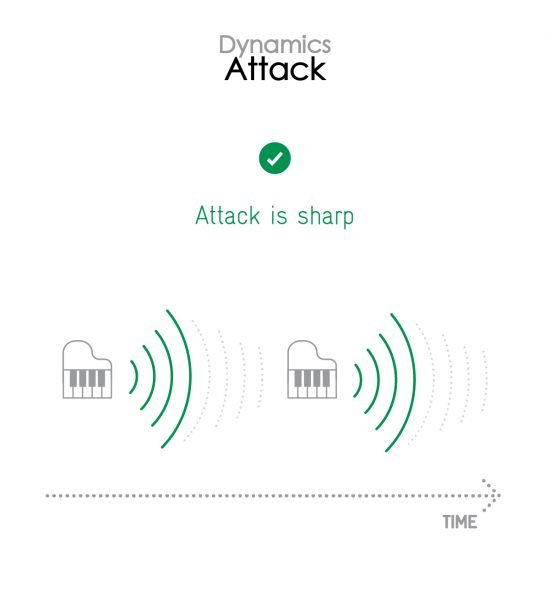
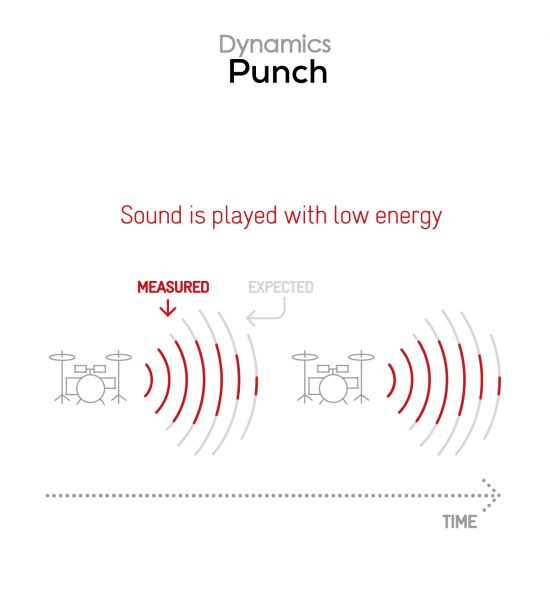
Bass attack is on target, but sustain is nonexistent. Punch is weak, especially at soft volume. At maximum volume, the performance is impaired by compression.

Spatial
Vivo X60 Pro 5G (Snapdragon)
23
88
The sub-attributes for perceptual spatial tests include localizability, balance, distance, and wideness.
As of this writing, the 23 earned by the X60 Pro for the spatial attribute is a new low in our database rankings. As expected with a one-speaker device, the score for wideness was zero, because by its nature it’s a mono device. The blurry tonal balance muddles localizability. The human ear relies on the higher frequences to locate sounds. Here, with little high end to work with, that becomes problematic.

Balance is slightly shifted to the top right where the only speaker is firing. Distance is unnatural because of inconsistent midrange; voices seem to be coming from behind a thick veil.

Volume
Vivo X60 Pro 5G (Snapdragon)
68
91
Volume tests measure both the overall loudness a device is able to reproduce and how smoothly volume increases and decreases based on user input.
Here the X60 Pro earned some positive marks, with a solid performance in the volume attribute. The maximum volume achieved by the X60 Pro is on the mark, and the minimum volume is comprehensible, although it might be difficult to listen to high dynamic content, such as classical music, at this level.
Here are the results of the objective measurements we carried out in our laboratories, using recordings of both hip-hop and classical music played at the maximum user volume step:
| Hip-Hop | Classical | |
| Vivo X60 Pro 5G (Snapdragon) | 74.5 dBA | 70.9 dBA |
| Vivo X51 5G | 71.3 dBA | 70.4 dBA |
| Samsung Galaxy A52 5G | 72 dBA | 68.3 dBA |

Artifacts
Vivo X60 Pro 5G (Snapdragon)
93
113
Artifacts tests measure how much source audio is distorted when played back through a device’s speakers. Distortion can occur both because of sound processing in the device and because of the quality of the speakers.
Here is the one attribute where the Vivo X60 Pro truly shines, coming just three points shy of the top score to date among all smartphones, the 96 achieved by the Samsung Galaxy A52 5G. Our engineers observed few artifacts overall, although they noted some compression at maximum volume. There was some bass distortion when the device was playing synthetic signals (not something that would affect the average consumer). Gamers take note: The X60 Pro is easy to occlude due to single speaker design.
Recording

Timbre
Vivo X60 Pro 5G (Snapdragon)
54
91
As a recording device, the Vivo X60 Pro captures below average timbre. In daily life recordings, the tonal balance produced by the device is dark and muffled with a strong lack of treble and high midrange, especially with loud background noise, as in the urban scenario. Performance is even worse in selfie video where the intrusive noise reduction setting is enabled by default. Overly oppressive, this algorithm strongly impairs overall sound quality.
In our home use case, a quieter environment, the device’s recordings are less altered by that noise cancelling algorithm and sound slightly more natural. For recordings at high SPL, the electronic music concert use case, timbre shows the same shortcomings: dark tonal balance, lack of clarity, and an absence of high-end extension. Bass presence is good but quite boomy, especially with strong low-end content like electronic music.

Dynamics
Vivo X60 Pro 5G (Snapdragon)
48
81
The Vivo X60 Pro earned one of the lowest scores in our database rankings for recording dynamics. When using the rear cameras to record video, the Signal-to-Noise Ratio (SNR) is correct overall, but the envelope is not accurate because of compression and dark tonal balance, which throws off the sharpness of plosives and the intelligibility of voices.
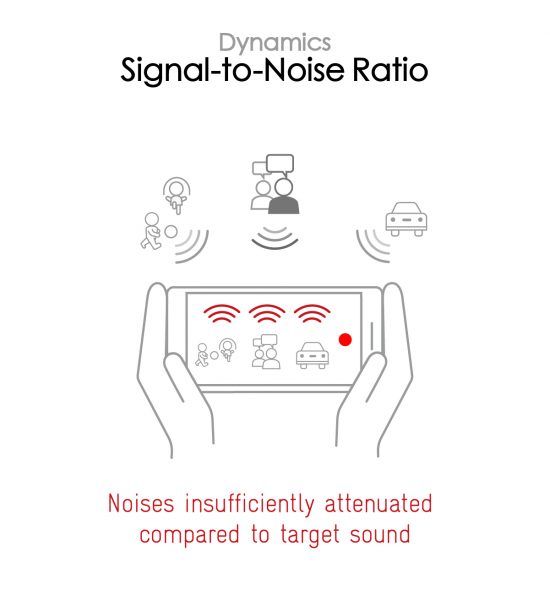
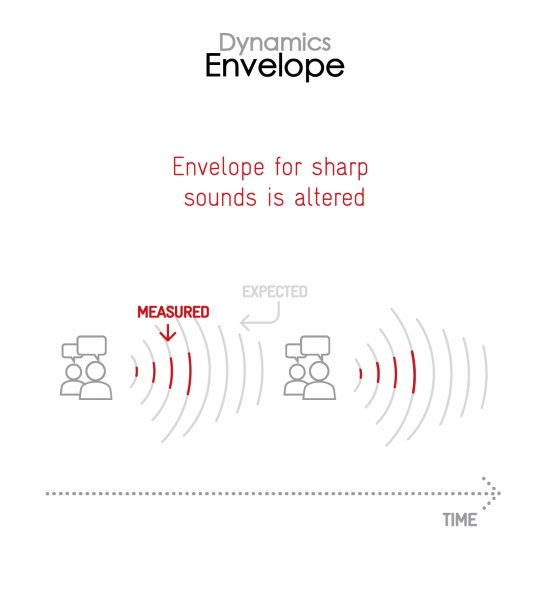
In selfie video, overly strong noise canceling destroys the envelope. Noise reduction crushes the entire signal, including useful information. Background is heavily attenuated, but voices are not very intelligible, impairing the SNR. SNR performance is better in the home use case because the application of noise reduction is less extreme and voices are more intelligible.

When using the memo app to record, the envelope performance is slightly better, but dynamics performance is still below average. For recordings at high-SPL, the envelope is correct, but it’s impaired by compression, especially on loud bass hits.

Spatial
Vivo X60 Pro 5G (Snapdragon)
33
78
As with the spatial performance in playback, the Vivo X60 Pro struggles mightily. When recording video with the rear cameras, wideness is very limited, and localizability is not precise; that’s because of a narrow audio scene and a strong absence of clarity.

With the overall sound being very dark and muffled, distance perception is not realistic. In selfie video, wideness is even more narrow, almost mono. Excessive noise reduction, a consistent bugaboo with this device, strongly hinders distance and localizability. In the meeting use case, the device does a better job of capturing the wideness of the audio scene, elevating the spatial performance.

Volume
Vivo X60 Pro 5G (Snapdragon)
67
99
Volume performance in recording is a bright spot for the Vivo device. It achieves good loudness overall, though it’s slightly better in selfie video than with the rear cameras. Recording at the maximum level without distortion is correct.
Here are our test results, measured in LUFS (Loudness Unit Full Scale). As a reference, we expect loudness levels to be above -24 LUFS for recorded content:
| Meeting | Life Video | Selfie Video | Memo | |
| Vivo X60 Pro 5G (Snapdragon) | -25.5 LUFS | -19.1 LUFS | -19.7 LUFS | -20.3 LUFS |
| Vivo X51 5G | -29.2 LUFS | -24.1 LUFS | -20.5 LUFS | -23.7 LUFS |
| Samsung Galaxy A52 5G | -26.1 LUFS | -22.3 LUFS | -20.8 LUFS | -21.5 LUFS |

Artifacts
Vivo X60 Pro 5G (Snapdragon)
57
97
The X60 Pro hits an average score for the recording artifacts attributes. On daily life recordings with loud background noise, some distortion is noticeable on loud sounds like shouting voices. In selfie video, heavy noise reduction (again an issue) induces temporal and spectral artifacts like gating, compression, strange resonances, and hissing.
Our engineers observed fewer artifacts in use cases where the background is quieter. For recordings at high SPL, some compression and bass distortion are noticeable as well as some distortion on sharp loud sounds. The noise reduction algorithm also affects the performance in selfie video. You can check for artifacts yourself in this sample recording:

Background
Vivo X60 Pro 5G (Snapdragon)
14
60
The background attribute is another weak point for the Vivo device. In all use cases, the tonal balance of the background is very dark and unnatural. In selfie video, noise reduction strongly impairs the performance — background is barely audible.
Conclusion
The Vivo X60 Pro starts off with a distinct disadvantage because of its one-speaker design, and many of its shortcomings stem from that starting point. Overly aggressive noise cancellation in recording is also problematic. One bright spot is its stellar showing in the playback artifacts attribute, which ranks among the best among the devices we’ve tested.


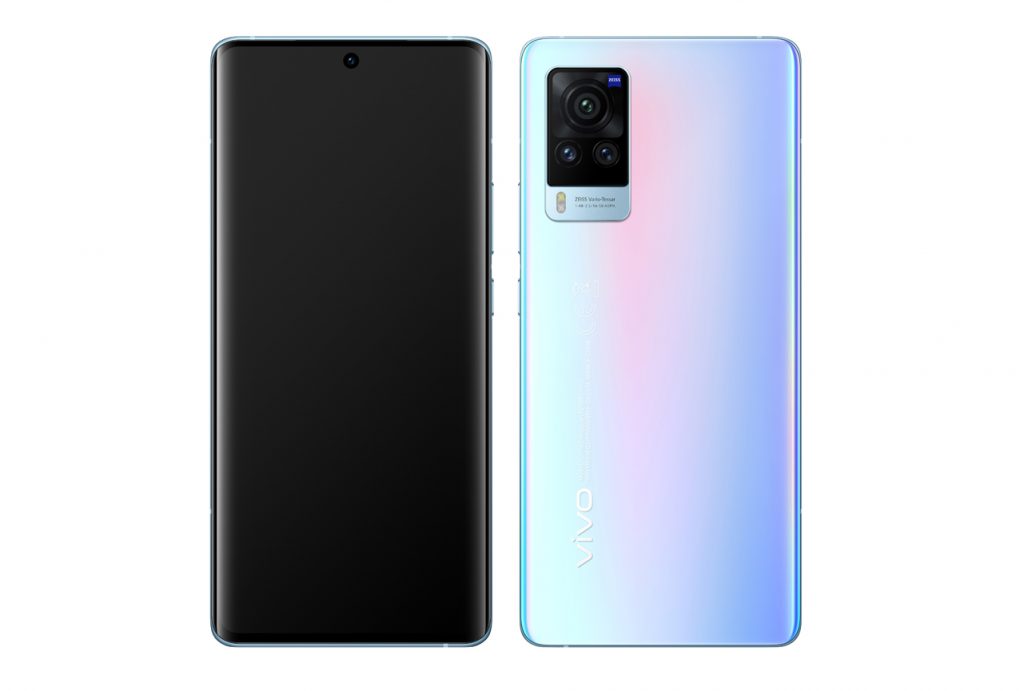
DXOMARK encourages its readers to share comments on the articles. To read or post comments, Disqus cookies are required. Change your Cookies Preferences and read more about our Comment Policy.